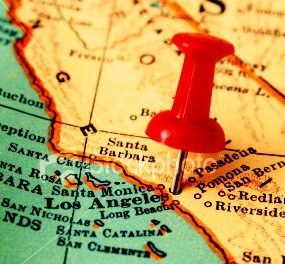36,027 homes closed escrow in California during September 2013. This is 6% higher than one year earlier. However, September 2013 showed a 15% drop in sales volume from August 2013.
Related article:
September’s meager 6% year-over-year increase will not make up for the downward trend experienced in home sales volume throughout most of this year. Increases in both home prices and mortgage interest rates have stifled any upward movement in sales volume this summer and into fall.
The bumpy recovery pattern continues, and the ride is getting rough. Home sales volume rose in 2009, fueled by end users clamoring after tax credits. Then, in 2010-2011, home sales volume fell back for lack of all types of buyers. It rose again in 2012, driven primarily by speculator interference. And now we see it trending downward again for lack of end user demand.
As we continue through the second half of 2013, expect sales volume to fall below last year’s levels — a normal market response to the speculator-driven price bounce and mortgage rates.
California’s real estate sales volume needs about 60,000 homes sold monthly to fully recover. That recovery is dependent on 18-24 months of annual California job growth exceeding 350,000-400,000 jobs. We are nowhere close at this point in the recovery, but likely will be around 2016.
Related article:
Other key factors controlling California’s housing market sales volume follow.
Absentee homebuyers: to hold or to fold?
Absentee homebuyers (speculators, buy-to-let investors and renovation contractors) accounted for 26% of Southern California (SoCal) September sales volume, down from 28% one year earlier. September 2013 represented the lowest share of absentee homebuyers in SoCal since November 2011, a sure sign speculators are beginning to exit the market.
Absentee homebuyers made up 21% of Bay Area homebuyers in September, down from 24% one year earlier.
Speculators chase upward price movement, but sales volume has been softening and prices will slip next. Thus, the percentage of absentee buyers making up monthly sales will continue to drop in the fourth quarter of 2013.
Cash purchases (two-thirds of which are made by speculators) remained abnormally high in September, representing 28% of SoCal sales volume. However, cash sales have been decreasing steadily this year, and are currently at their lowest since September 2010. In a normal market, cash purchases represent around 16% of all buyers, comprised mainly of end users.
The percentage of sales attributed to cash purchasers will drop by the end of 2013, as speculators react to slipping prices.
Bay Area cash sales were 24% of home sales in September 2013. This is down from 28% one year earlier.
Speculators will remain motivated to buy only so long as they believe home prices will rise quickly. Expectations of a quick resale have faced the headwinds of falling sales volume since November 2012. Will reality finally set in when prices follow sales volume and mortgage rates, and take a sympathetic nosedive going into 2014?
The annual increases in the buyer purchasing power index (BPPI) came to an end in June 2013, dimming the prospects of flipping for a profit. Sellers ignore these trends at their peril.
When speculators realize they cannot make a short-term profit as soon as anticipated, most will quickly leave the market. The inventory they dump (today’s growing shadow inventory) will be consumed primarily by end users and income property investors. However, there aren’t enough of these buyers ready and willing to sustain current sales volume. Thus, expect sales prices to remain level to down through and beyond 2014.
At the moment, demand from end users represents only half the number needed for a normal 60,000 monthly sales volume.
Related article:
Jumbo loans: room at the top
Jumbo loans (loans over $417,000) in SoCal accounted for 27% of September 2013 sales. This is down slightly from the peak in June and July 2013, when jumbo loans made up a higher percentage of SoCal’s home sales than at any other time since mid-2007, when jumbo loans consisted of 37% of sales.
Jumbos financed a whopping 50% of Bay Area sales. This is down from 53% in the prior month and up from 37% a year earlier.
Jumbo use has risen statewide as sales of high-tier properties have accelerated — particularly in the pricey Bay Area — since 2009. Despite this increase, jumbo use remains far below its peak in 2006-2007 when buyer overreaching maxed out.
Related article:
FHA-insured loans: a window is closing
Federal Housing Administration (FHA)-insured loans made up 19% of SoCal mortgage recordings. This is level with last month, and down from 26% one year earlier.
FHA-insured loans made up 11% of Bay Area mortgages in September. This is roughly level with the prior month and down from 16% one year earlier.
FHA-insured loan use across California is around its lowest level since late 2008. first tuesday anticipates the percentage of FHA-insured loans will steadily drop, hitting a bottom of 4% of loan originations around 2018. High (and rising) FHA insurance premiums make conventional loans with private mortgage insurance (PMI) more appealing, as they ought to be.
FHA buyer standards have also been tightened at this point in the recovery. Nonetheless, FHA-insured financing remains popular as a loan of last resort for determined first-time homebuyers with low savings and less than ideal credit scores.
Related article:
ARMs: holding lenders at bay
Adjustable rate mortgages (ARMs) made up 12% of all SoCal mortgages, up double from 6% one year earlier. SoCal ARM use in September was the highest it’s been since mid-2008, the heart of the recession. ARM use made up 13% of all SoCal sales in July 2008.
ARM use in the Bay Area was at 20% in September. This is the highest level of ARM use since mid-2008 when ARMs made up 21% of all transactions. Cash transactions in the Bay Area are slipping, a warning that prices are being supported by ARMs. If this trend continues into 2014, the Bay Area will certainly be in a bubble and due for a crash in sales volume and prices.
ARM use will remain relatively low statewide until property prices rise more than 5% annually for at least two years. This probably will not happen with the current price bounce. When it does, ARM use will increase as agents push homebuyers to overreach on amenity value, appraisers drift away from comparable pricing and inevitably lenders relax credit standards. This will not likely happen until the next big bubble, expected to occur around 2018-2020.
Related article:
Re: California September home sales from DataQuick
[G1]Please address this – lenders won’t be relaxing credit standards any time soon.















What the article’s author fails to take into consideration is the continuing government and financial crisis, which will bring our nation to the precipice of disaster once again.
Increasing numbers of foreign (and domestic) investors are shunning the dollar and any investment denominated in dollars. The BRICS nations and its allied consortium of 180 nations are working feverishly to find a replacement for the US Dollar as the world reserve currency. For example, Russia and China no longer use dollars to trade between themselves. Warren Buffet is divesting himself of US stocks like mad.
Those 180 nations have come to the conclusion that it is the Western Banking Cabal, which controls the money supply in the US and Europe, that is at the root of most of the world’s problems—-hunger and famine; disease and plagues; poverty and deprivation; and the destruction of the ecosystem.
The day will inevitably arrive when no one wants the dollar, and that day may be closer than you think. ALL the tax revenues collected in America go to pay the interest on our massive national debt, officially put at $16 trillion, but, when domestic obligations and so-called entitlements are considered, it is really much more.
Bernanke is still handing $85 billion per month to the big banks, the very cause of the 2008 financial crisis! In return the FED is receiving toxic mortgage securities—meaning that the FED will soon be the owner of MOST mortgages in America, both residential and commercial! That’s nearly one trillion a year that the FED is handing to the banks!
Considering the Department of Homeland Security is militarizing the police forces across America, putting thousands of spy drones into our skies (weaponized?), and that FEMA has purchased thousands of tank-like vehicles and the DHS has recently bought 1.2 billion rounds of hollow-tipped bullets, you may wonder if something dramatic is being planned for.
The end-game of the big Banking Cabal is total control. Their minions are in many positions of power already. The mayor seats of our major cities, a bulk of Obama’s administrative agencies, the FED, and most major bank CEO’s. They control the media to delete any information that exposes their secret operation, and they put forth only what they want you to believe…….thereby shaping your opinions.
Their plan has been called the New World Order by G.W.H. Bush, the former head of the CIA, then vice president, then president. Clinton has used the same term, and Henry Kissinger calls for its establishment.
So far, the bulk of our population is oblivious to what is happening to them or what the New World Order will really mean for them, and, unfortunately, when the plan is culminated, it will hit them by surprise like a ton of bricks falling on their heads.
Inform yourselves people. Your life and well-being will depend on what you know and how prepared you are in the coming months and years.